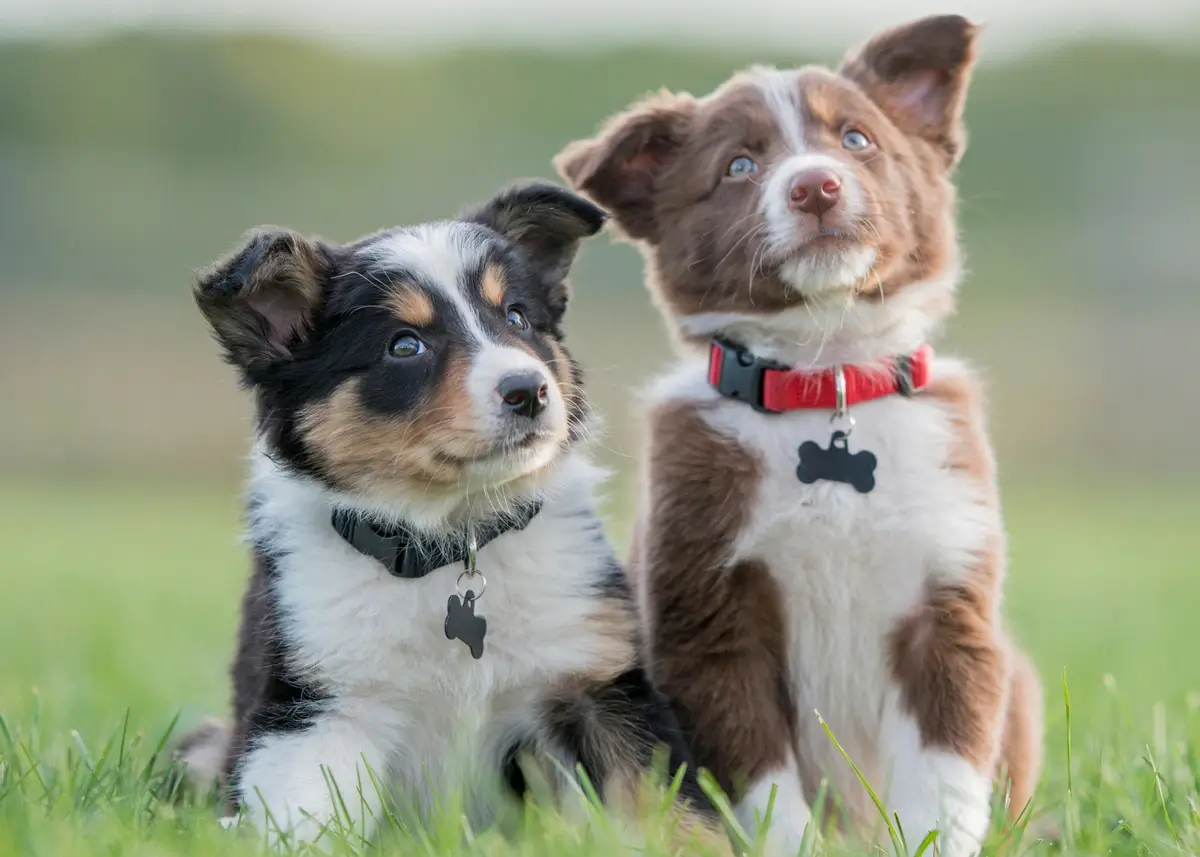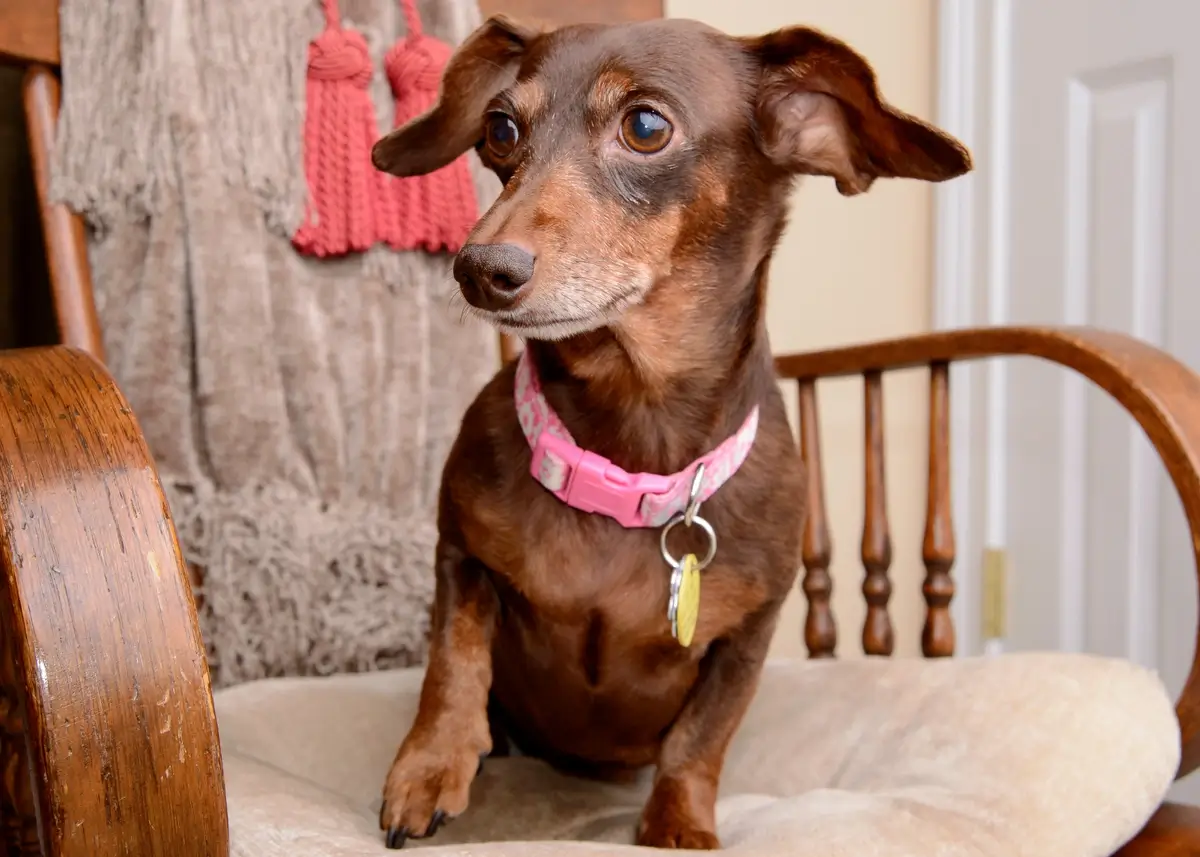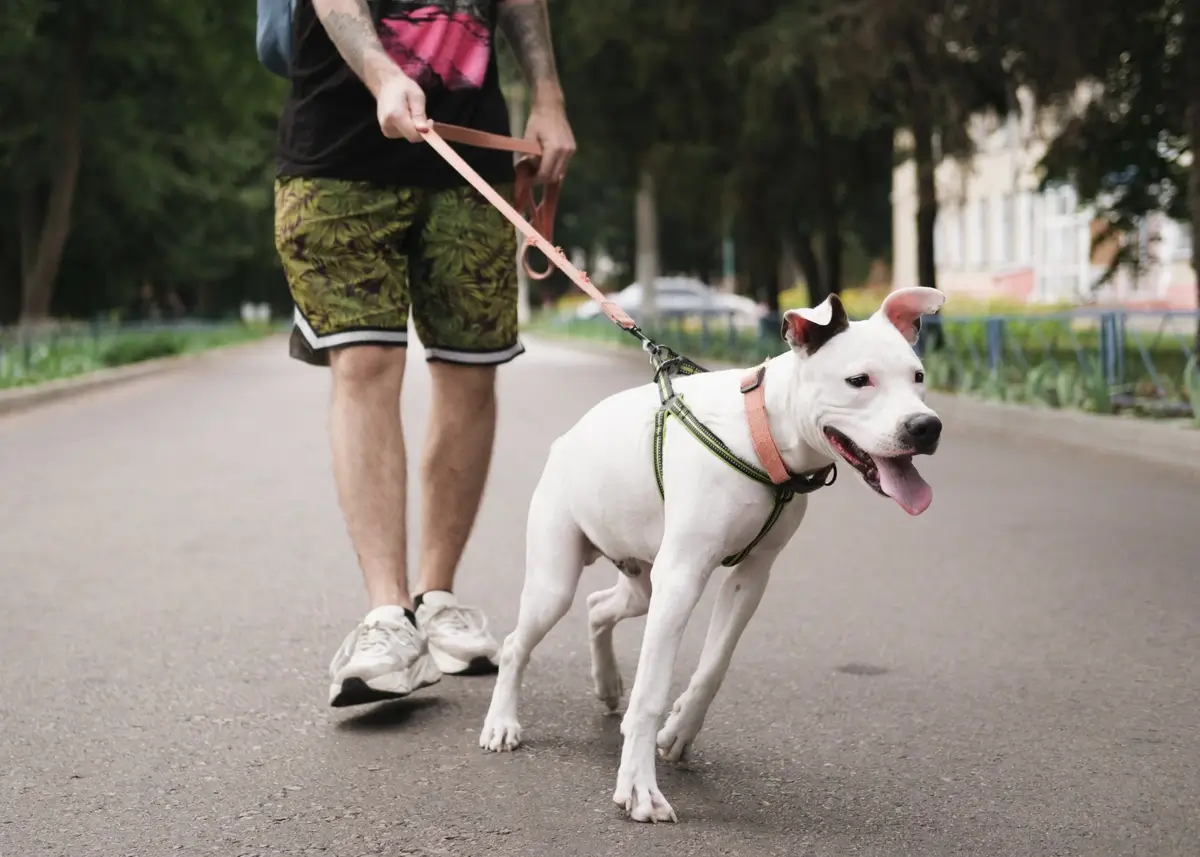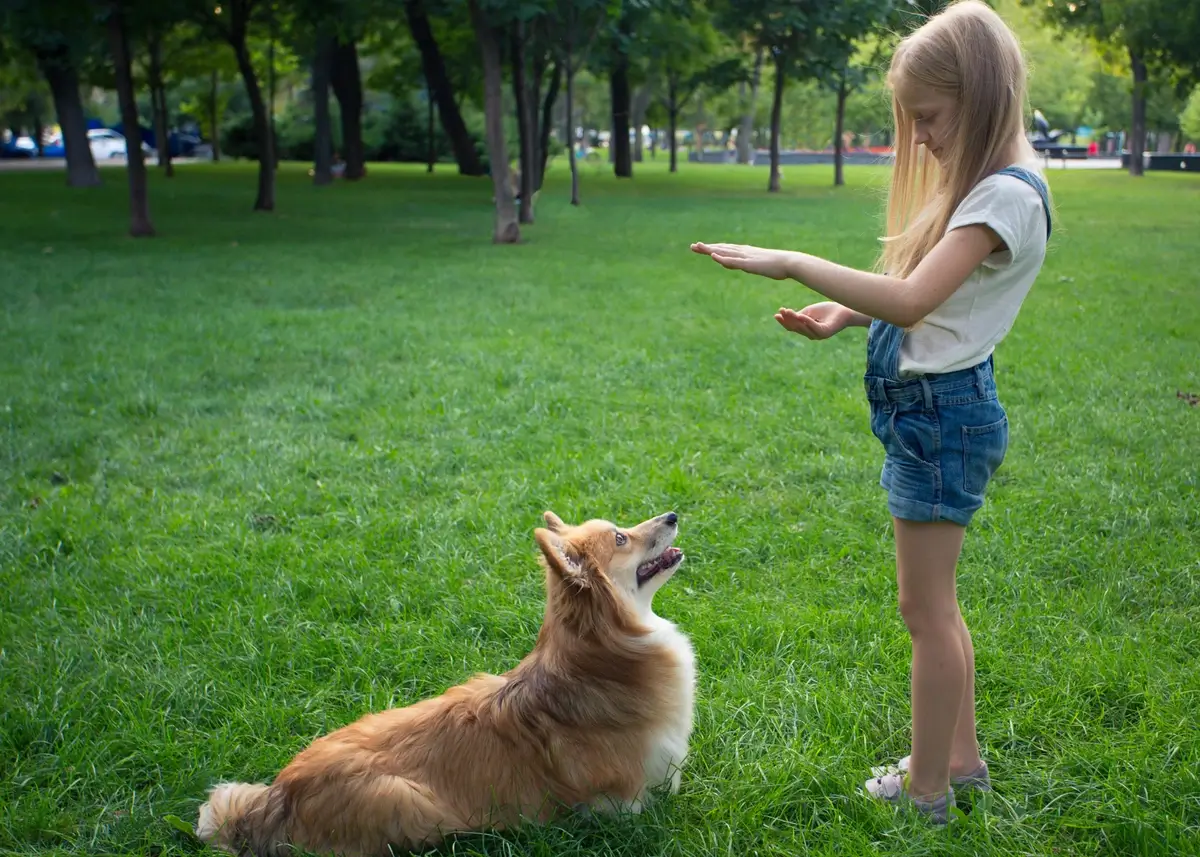Oh where, oh where has my little dog gone?
Oh where, oh where can he be?
Hopefully, you will never have to sing this song!
Searching for a missing puppy is a stressful and heartbreaking time. One of a puppy owner’s worst nightmares is being separated from your puppy in a traumatic manner. Your puppy could dart away from you on a walk or through an open gate or door. Unfortunately, dog napping is on the rise, and you may suspect your puppy was stolen.
Waiting until an unfortunate event happens is not the time to focus on your regret of not providing proper identification for your puppy.
The good news is you can prepare a few ways to prove your puppy is yours. At Pawrade, we take puppy safety extremely seriously. Here are some tips for how to keep your puppy’s identity safe before your puppy goes missing.
5 Ways to Ensure Your Puppy’s Identity
Deciding what you need when bringing home a new puppy can be daunting, but with a little preparation, you’ll be ready for any scenario.
One of the biggest factors when preparing for a new puppy is to make sure you do everything you can to collect everything you need in case you have to prove you are indeed the found puppy’s owner.
Taking 5 simple steps will help you protect your puppy’s identity:
- Getting your pup microchipped
- Providing proper dog ID tags or collars
- Choosing the right dog harness & leash
- Training your puppy with simple commands
- Keeping a folder of important puppy information handy
Some items will cost money, but others are completely free. You’ll want to make sure you include microchipping and a collar with identification in your budget when thinking of how to prepare financially for a puppy. Sitting down and going over each of these components with your household will ensure your puppy is kept as safe as possible if you can’t locate them.
1. Microchip Your Puppy
Microchipping is a safe and effective way to ensure that your dog can be easily identified and reunited with you if it ever gets lost. If you’re wondering how a microchip works in your puppy, you’ll see it’s an easy and important simple procedure.
What is a microchip? What is the microchipping procedure like?
A microchip is a tiny device, about the size of a grain of rice, that is implanted under the skin of your dog. This device contains a unique identification number that can be read with a special scanner, connecting to a dog ownership database allowing your dog to be identified and returned to you if they ever become lost or stolen. The procedure is quick, relatively painless, and can be performed by a veterinarian or trained technician.
Why you should microchip your puppy
According to a study conducted by the American Veterinarian Medical Association, “more than 7,700 stray animals at animal shelters in 23 states showed that microchipped animals are far more likely to be returned to their owners. In that study, microchipped stray dogs were returned to their owners at more than double the overall rate for all stray dogs (both microchipped and not microchipped).” With statistics like these, why wouldn’t you want to do what you can to provide as much information as possible in case of separation?
Do all Pawrade puppies come with a microchip?
When you buy a Pawrade puppy, some of our trusted breeders will microchip their puppies ahead of time, while others leave it up to the new owner. Regardless of where your puppy has its microchip implanted, don’t forget to fill out the paperwork and register your microchip number! If you move residences, be sure to update your puppy’s microchip information as well.
2. Provide Proper Dog ID Tags & Collar
Dog ID tags are a simple but effective way to ensure the safety and well-being of your furry friend. A proper collar needs to have sturdy D-rings or O-rings that securely hold ID tags. A dog ID tag can help your pet be identified if they get lost or run away. The benefits of dog ID tags displayed on a dog collar are numerous, including:
- Contact information: Your dog's ID tag can display your contact information, including your name and phone number, making it easy for someone to contact you if your dog is found.
- Quick response: With an ID tag, if someone finds your lost dog, they can contact you directly without the need for a time-consuming trip to a shelter or vet's office.
- Peace of mind: Having an ID tag on your dog can give you peace of mind, knowing that your pet has a better chance of being returned to you if they become lost.
- Legal requirements: In many areas, it's a legal requirement for dogs to wear ID tags when in public places.
How do I know which dog ID tag or collar to choose?
You can always start by asking your licensed veterinarian what tag they recommend. They see hundreds of dogs and are most likely to be familiar with several types on the market. In addition, you can ask your puppy-owning friends for recommendations or read reviews on the best dog identification tags to see which one fits your criteria and budget.
In addition, you may opt for a collar with your contact information embroidered directly into the nylon webbing for even more security. A collar, though, is never a substitute for proper dog identification tags.
3. Choose the Right Dog Harness & Leash
Another thing you can do to ensure the safety of your puppy is to select the right sturdy, reliable dog harness and leash. Here are some reasons why you need to decide on the best type of puppy harness and choose the best leash for your puppy’s needs.
A puppy can get away quickly if he or she has an ill-fitting harness or the proper leash isn’t used. If your puppy notices a kitty or a bird, it may bolt straight toward it! From a puppy’s perspective, the world is full of curiosities to discover, and your puppy will not look up to you for permission to explore.
In addition, puppies grow quickly! Choose a harness that fits your puppy now, not choosing one too large so that he or she can slip out while you wait for your puppy to grow into it. Check every week to see if your puppy has outgrown the harness. As your puppy grows larger, he or she may tug more, requiring a leash that can handle their strength until they are trained.
If you choose the wrong type of leash for your puppy’s needs, you may not have as much control over them as you’d like when you’re taking your puppy on a walk around the neighborhood. For example, a thin, retractable leash may be a great choice for a smaller, less energetic puppy that will not grow much bigger. However, a large dog breed or a high-energy breed may tug more or be more active on the other end, requiring a leash that can handle that strength and energy until they are trained.
4. Teach Your Puppy Basic Training Commands
You should start teaching your puppy basic puppy training commands on the first full day with you. Begin right away so you have as much time to help them master commands as you can!
Even if you start early during those crucial months, your puppy will take a while for these commands to sink in with perfect recall. Until then, you’ll have to be very patient when teaching basic puppy commands.
Start training your puppy with simple commands that will help with puppy safety. In particular, the “Sit” command allows you to put on dog ID tags, buckle a secure harness or a leash, and will come in handy if someone finds your pup so they can search for pertinent information to contact you.
The command “Come” is perhaps the most important command you can teach your puppy. Puppies are extremely enthusiastic to explore the world around them. If a door is left open, they’re definitely going to investigate whether you’ve had a chance to train them yet. The term “recall” means your puppy does what you ask of him or her every single time. Having a strong recall for the “Come” command will train your puppy to ignore distractions and return immediately to your loving arms.
5. Compile a Puppy Information Folder
When someone finds a lost puppy, there are a few things that can happen. They may bring it to the nearest vet to scan for a microchip and go from there, keeping the puppy at their home until they locate the owner. They may post on social media sites with a “found puppy” post. They may take your puppy straight to the animal shelter, where they will also scan for a microchip.
However, how will you prove you are the owner of your puppy when you respond to the fateful call?
This is where a physical copy of a puppy information folder can prove to be invaluable. A puppy information folder contains all sorts of items you can use to locate and prove ownership, including:
- Certificate of sale
- Veterinarian Records
- Microchip paperwork
- Registration papers if applicable
- A printed current picture of your puppy plus one with you and your puppy
- Important numbers to your vet, an emergency vet, and nearby shelters or rescues
Do some local research on area vets and animal shelters in case you have to search for your puppy. Understand what the intake process is for lost puppies in your city or county, whether an animal control officer finds your puppy or someone brings it to the shelter instead of a local veterinarian first.
Our comprehensive list of puppy ownership information to put in your puppy folder helps if you have a dog sitter in your home or need to evacuate with your puppy in case of a natural disaster or other unfortunate circumstance as part of your pet disaster preparedness plan.
Pawrade Supports Puppy Safety
You can rest assured we at Pawrade actively fights puppy scams and provide a secure platform for puppy adoption. We love matching potential pawrents like you with healthy, happy puppies from reputable breeders. We work together to ensure you have the best start with your puppy from Day 1. When you decide on one of our puppies for sale, let us know so we can help you meet your furever friend!






